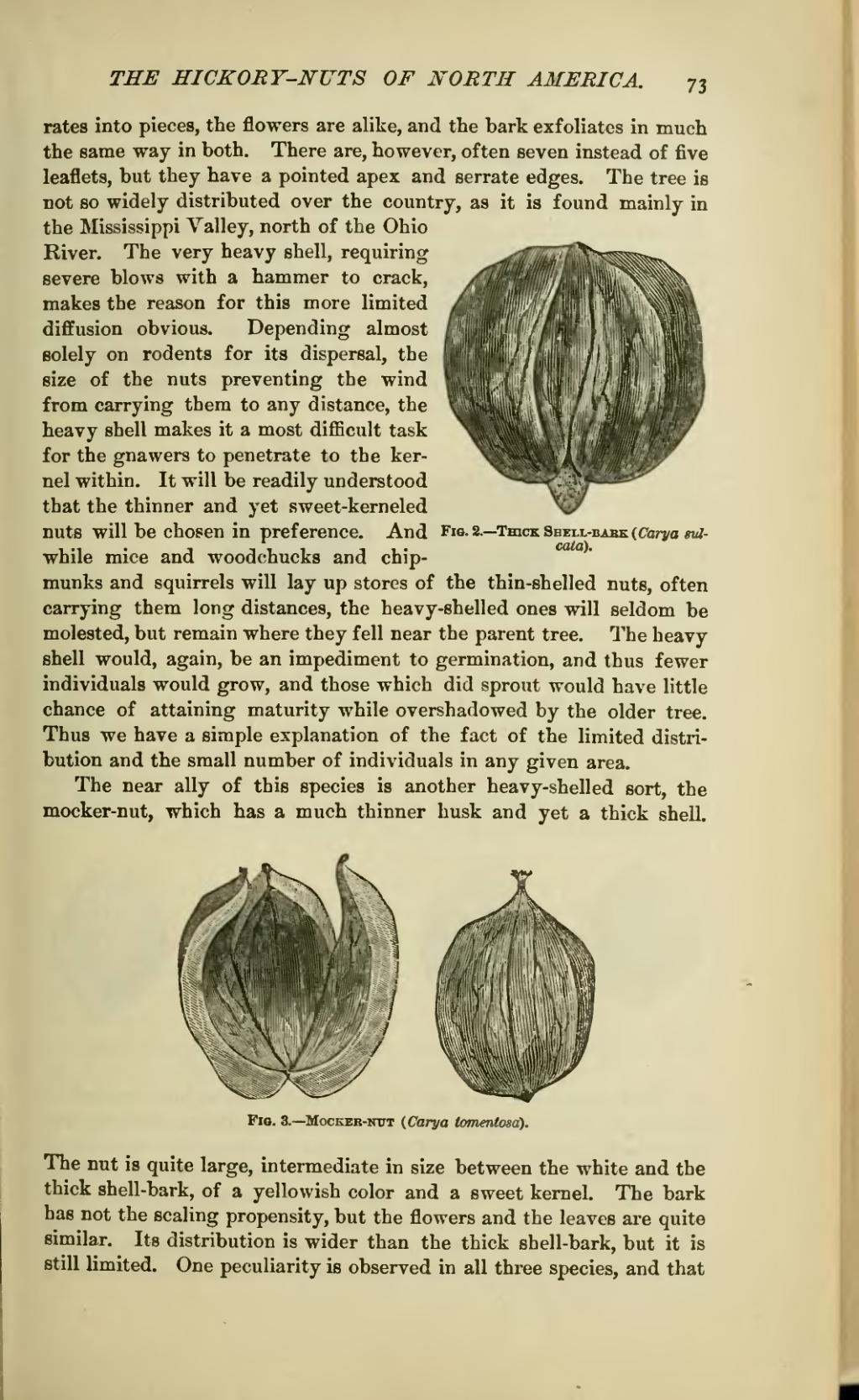rates into pieces, the flowers are alike, and the bark exfoliates in much the same way in both. There are, however, often seven instead of five leaflets, but they have a pointed apex and serrate edges. The tree is not so widely distributed over the country, as it is found mainly in  Fig. 2.—Thick Shell bark (Carya sulcata). the Mississippi Valley, north of the Ohio River. The very heavy shell, requiring severe blows with a hammer to crack, makes the reason for this more limited diffusion obvious. Depending almost solely on rodents for its dispersal, the size of the nuts preventing the wind from carrying them to any distance, the heavy shell makes it a most difficult task for the gnawers to penetrate to the kernel within. It will be readily understood that the thinner and yet sweet-kerneled nuts will be chosen in preference. And while mice and woodchucks and chipmunks and squirrels will lay up stores of the thin-shelled nuts, often carrying them long distances, the heavy-shelled ones will seldom be molested, but remain where they fell near the parent tree. The heavy shell would, again, be an impediment to germination, and thus fewer individuals would grow, and those which did sprout would have little chance of attaining maturity while overshadowed by the older tree. Thus we have a simple explanation of the fact of the limited distribution and the small number of individuals in any given area.
Fig. 2.—Thick Shell bark (Carya sulcata). the Mississippi Valley, north of the Ohio River. The very heavy shell, requiring severe blows with a hammer to crack, makes the reason for this more limited diffusion obvious. Depending almost solely on rodents for its dispersal, the size of the nuts preventing the wind from carrying them to any distance, the heavy shell makes it a most difficult task for the gnawers to penetrate to the kernel within. It will be readily understood that the thinner and yet sweet-kerneled nuts will be chosen in preference. And while mice and woodchucks and chipmunks and squirrels will lay up stores of the thin-shelled nuts, often carrying them long distances, the heavy-shelled ones will seldom be molested, but remain where they fell near the parent tree. The heavy shell would, again, be an impediment to germination, and thus fewer individuals would grow, and those which did sprout would have little chance of attaining maturity while overshadowed by the older tree. Thus we have a simple explanation of the fact of the limited distribution and the small number of individuals in any given area.
The near ally of this species is another heavy-shelled sort, the mocker-nut, which has a much thinner husk and yet a thick shell.

Fig. 3.—Mocker-nut {Carya tomentosa).
The nut is quite large, intermediate in size between the white and the thick shell-bark, of a yellowish color and a sweet kernel. The bark has not the scaling propensity, but the flowers and the leaves are quite similar. Its distribution is wider than the thick shell-bark, but it is still limited. One peculiarity is observed in all three species, and that
